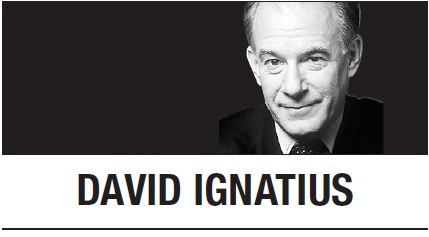
Amid the slithering mess of problems that emerged in 2017, the one that bothers me most is that people don’t seem to know what’s true anymore. “Facts” this year got put in quotation marks.
All the other political difficulties of the Donald Trump era are subsumed in this one. If we aren’t sure what’s true, how can we act to make things better? If we don’t know where we are on the map, how do we know which way to move? Democracy assumes a well-informed citizenry that argues about solutions -- not about facts.
We can all choose our favorite examples of America’s increasing difficulty in agreeing about evidence: the disdain for science among climate-change skeptics; the refusal to believe allegations about people we like, and the overeagerness to denounce those we don’t like; the way in which political polarization has spread into every area of our common life -- including sports.
What should thoughtful people do about this overarching problem? Part of the answer lies with my profession, the news business. We need to work harder to make sure that we’re unbiased truth-tellers, not a series of echo chambers. When every story in a newspaper or on a website or cable channel seems to be going in the same direction, that’s a sign that something’s wrong. That’s one reason I’d like to see a return of ombudsmen, to hold news organizations more accountable.
But journalists need new tools. We can’t always vet every fact. We rely on certain trusted sources, news services such as the Associated Press or Reuters. But even those superbly professional fact-gatherers sometimes have trouble verifying information. Social media can help -- people can upload video from their cellphones of events as they happen. But we’re learning that social media can be tools of deception as well as truth.
So here’s an offbeat proposal: Just as the provenance of a work of art is established by art historians and auction houses, we need technological tools that will help confirm the provenance of facts.
The idea is simple: An art buyer should want to know that the painting attributed to, say, Leonardo da Vinci was actually created by him. So specialists seek to reconstruct the chain of ownership, documenting how a work passed among collectors and galleries over the centuries. Scholars can’t always establish direct links back to the artist (and such uncertainty appears to cloud the recent purchase of Leonardo’s “Salvator Mundi” for $450 million). But the exercise is essential for the proper functioning of art markets.
There’s even a new approach known as “digital provenance.” This topic was explored at a conference this month at the Carnegie Museum of Art in Pittsburgh. One set of panels explored “visualizing object histories,” including the study of “movements of objects and people through time and space.”
The internet giants like Google and Facebook should be tuning their systems to establish the provenance of fact. I’d like to see them using “machine learning” to interrogate supposed facts to establish where they’ve been -- how they first surfaced, and how they were passed from user to user. If there are gaps in provenance -- an unexplained missing link in the chain of evidence, or signs of misattribution -- then those anomalies should be flagged automatically.
In this fact-provenance scheme, we’d hopefully be able to trace information back to the source and detect evidence of manipulation. News organizations whose track record is shown to be reliable would get weighted positively by the digital system. Such measurement of source reliability would be a tricky test, but it doesn’t strike me as impossible. Google does something similar every time you type a phrase into the search box.
People could still base their decisions on dubious, unverified facts, just as a collector can still buy a painting whose provenance is suspect. But there would at least be fair warning.
We speak often of the “marketplace of ideas,” in the expectation that markets operate rationally and efficiently. But consumers assume that most markets aren’t rigged, and that tainted or unsafe products have been screened. That’s obviously a complicated problem when the commodity is information -- the First Amendment lets us promote ideas without rating their safety. But the First Amendment doesn’t protect fraud, libel or deceit.
We live in an information ecosystem, to choose another analogy. If it becomes polluted, all the creatures that depend on that ecosystem are at risk. We say that sunlight is the best disinfectant. But that’s true only when the sun shines brightly.
By David Ignatius
David Ignatius can be reached via Twitter: @IgnatiusPost.-- Ed.
(Washington Post Writers Group)







![[Weekender] Korea's traditional sauce culture gains global recognition](http://res.heraldm.com/phpwas/restmb_idxmake.php?idx=644&simg=/content/image/2024/11/21/20241121050153_0.jpg)
